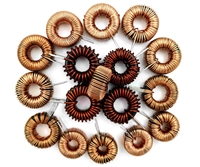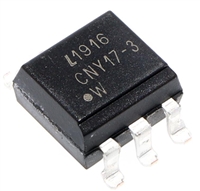CY7C2644KV18
144-Mbit QDR® II+ SRAM Two-Word Burst
Architecture(2.0CycleReadLatency)withODT
144-Mbit QDR® II+ SRAM Two-Word Burst Architecture (2.0 Cycle Read Latency) with ODT
Features
Configurations
■ Separate independent read and write data ports
❐ Supports concurrent transactions
With Read Cycle Latency of 2.0 cycles:
CY7C2644KV18 – 4 M × 36
■ 333-MHz clock for high bandwidth
Functional Description
■ Two-word burst for reducing address bus frequency
The CY7C2644KV18 is 1.8-V synchronous pipelined SRAM,
equipped with QDR® II+ architecture. Similar to QDR II
architecture, QDR II+ architecture consists of two separate
ports: the read port and the write port to access the memory
array. The read port has dedicated data outputs to support read
operations and the write port has dedicated data inputs to
support write operations. QDR II+ architecture has separate data
inputs and data outputs to completely eliminate the need to “turn
around” the data bus that exists with common I/O devices.
Access to each port is through a common address bus.
Addresses for read and write addresses are latched on alternate
rising edges of the input (K) clock. Accesses to the QDR II+ read
and write ports are completely independent of one another. To
maximize data throughput, both read and write ports are
equipped with DDR interfaces. Each address location is
associated with two 36-bit words (CY7C2644KV18) that burst
sequentially into or out of the device. Because data can be
transferred into and out of the device on every rising edge of both
input clocks (K and K), memory bandwidth is maximized while
simplifying system design by eliminating bus “turn arounds”.
■ Double data rate (DDR) interfaces on both read and write ports
(data transferred at 666 MHz) at 333 MHz
■ Available in 2.0-clock cycle latency
■ Two input clocks (K and K) for precise DDR timing
❐ SRAM uses rising edges only
■ Echo clocks (CQ and CQ) simplify data capture in high-speed
systems
■ Data valid pin (QVLD) to indicate valid data on the output
■ On-die termination (ODT) feature
❐ Supported for D[x:0], BWS[x:0], and K/K inputs
■ Single multiplexed address input bus latches address inputs
for both read and write ports
■ Separate port selects for depth expansion
■ Synchronous internally self-timed writes
■ Quad data rate (QDR®) II+ operates with 2.0-cycle read latency
when DOFF is asserted high
These devices have an ODT feature supported for D[x:0]
,
■ Operates similar to QDR I device with one cycle read latency
when DOFF is asserted low
BWS[x:0], and K/K inputs, which helps eliminate external
termination resistors, reduce cost, reduce board area, and
simplify board routing.
■ Available in × 36 configuration
Depth expansion is accomplished with port selects, which
enables each port to operate independently.
■ Full data coherency, providing most current data
[1]
■ Core VDD = 1.8 V± 0.1 V; I/O VDDQ = 1.4 V to VDD
❐ Supports both 1.5 V and 1.8 V I/O supply
All synchronous inputs pass through input registers controlled by
the K or K input clocks. All data outputs pass through output
registers controlled by the K or K input clocks. Writes are
conducted with on-chip synchronous self-timed write circuitry.
■ High-speed transceiver logic (HSTL) inputs and variable drive
HSTL output buffers
■ Available in 165-ball fine pitch ball grid array (FBGA) package
(15 × 17 × 1.4 mm)
■ Offered in non Pb-free packages
■ JTAG 1149.1 compatible test access port
■ Phase Locked Loop (PLL) for accurate data placement
Selection Guide
Description
Maximum operating frequency
Maximum operating current
333 MHz
333
1160
300 MHz Unit
300
MHz
mA
× 36
1080
Note
1. The Cypress QDR II+ devices surpass the QDR consortium specification and can support V
= 1.4 V to V
.
DD
DDQ
Cypress Semiconductor Corporation
Document Number: 001-44138 Rev. *I
•
198 Champion Court
•
San Jose, CA 95134-1709
•
408-943-2600
Revised November 2, 2012










 压敏电阻器在直流电路中的过压保护应用探讨
压敏电阻器在直流电路中的过压保护应用探讨

 电感耐压值及其与电感大小的关系
电感耐压值及其与电感大小的关系

 CNY17F光耦合器:特性、应用、封装、引脚功能及替换型号解析
CNY17F光耦合器:特性、应用、封装、引脚功能及替换型号解析

 DS1307资料解析:特性、引脚说明、替代推荐
DS1307资料解析:特性、引脚说明、替代推荐
